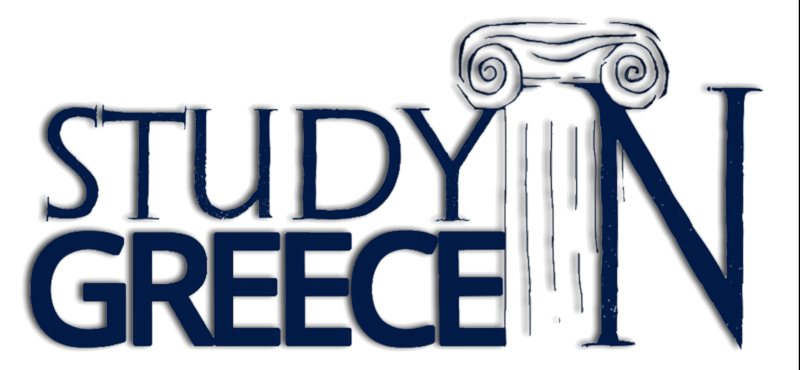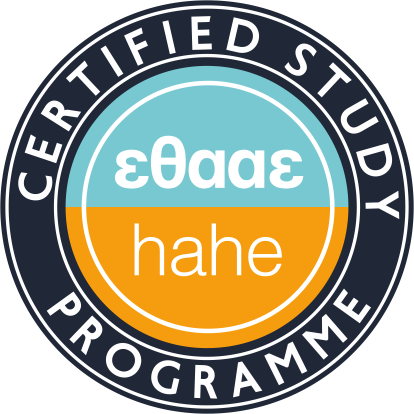Program Structure
The MSc in Economics is a full-time program. Courses take place between 9:00-18:00 from Monday to Friday. Each course is of a three-hour duration and is taught once a week. A few two-hour tutorials (review sessions) are offered in some courses, for exercises to be solved and queries to be answered.
The Program consists of 3 academic semesters. During the 1st (fall) and 2nd (spring) semester students are required to attend 4 and 5 courses respectively and during the 3rd (fall) semester they undertake a dissertation .
♦
| COURSE | ECTS CREDITS |
|---|---|
|
0 ECTS |
|
0 ECTS |
| COURSE | ECTS CREDITS |
|---|---|
|
7,5 ECTS |
|
7,5 ECTS |
|
7,5 ECTS |
|
7,5 ECTS |
2nd Semester (spring)
- Microeconomic Theory & Policy
-
Objective of the course is to master the basic notions and tools concerning pricing with market power, uncertainty and information and strategic behavior – game theory.It covers topics such as:
1. Market structure and welfare. From perfect competition to monopoly and between. Optimal pricing, elasticity, and monopoly distortion. 2. Basic concepts in game theory. Introduction to the economics of strategic behavior. Static games of complete information and the strategic (normal) form representation. 3. Dynamic games of complete information and the extensive form representation Subgame Perfection. 4. Leading applications of game theory: Oligopoly theory and Bargaining 5. Repeated games and the folk theorem; trigger strategies and collusion. 6. Introduction to the economics of information. Risk, uncertainty and von Neumann-Morgenstern expected utility. Adverse selection and moral hazard. 7. Static games of incomplete information. Bayes-Nash equilibrium. Revelation principle. Screening and Hidden Information. Auctions 8. Dynamic games of incomplete information. Sequential, Perfect Bayesian equilibrium Signaling 9. Moral Hazard. Hidden Action and Principal-agent models Managerial Incentives.
- Macroeconomic Theory & Policy
-
This course deals with the theory and empirical investigation of economic growth and economic fluctuations. It aims at presenting the basic models used by economists to study the economic fluctuations and to analyze the basic methodologies and techniques of modern macroeconomic analysis. Upon completion of the course, students will be able to use the basic dynamic models of economic growth and aggregate fluctuations and evaluate alternative macroeconomic policies. It covers the following topics: macroeconomic models of closed and open economies, implications for the conduct of monetary and fiscal policy in models with market and policy failures.
- Data Analysis, Applied Econometrics and Computational Methods
-
The aim of this course is to introduce students to applied econometric and data analysis methods. The first part of the course (Part A) covers topics in time series models (AR, MA, ARIMA) and estimation and forecasting procedures, for them. It also presents their multivariate extension (VAR-SVAR models), and presents the topics of integration-cointegration. The second part presents volatility models, and their applications in managing economic risks. Moreover, it presents econometrics models for large datasets. At the end of the course the students would have learned the recent applied econometric techniques and become familiar with applications of them, in practice, using computer software. It consists of two parts:
Part A: Time Series Models: AR(p), MA(q) and ARIMA(p,d,q) models, the estimation methods of ML, LS and non-linear LS (NLLS), Integration-cointegration analysis, Multivariate framework: VAR, SVAR and VECM models.
Part B: Volatility models (ARCH, GARCH, MGARCH etc), estimation and theoretical properties, and econometric models for large datasets, (Factor models, PCA, Large Panel Data).
- Elective 1*
-
selection from list*
- Elective 2*
-
selection from list*
| ECTS CREDITS | |
|---|---|
|
30 ECTS |
*2nd Semester Electives list (indicatively):
- Industrial Organization
-
The course contents are: The Cournot model and its implications. A quadratic utility, representative consumer model. Horizontal differentiation and spatial competition. Vertical differentiation. Entry Deterrence, Foreclosure and Limit Pricing. Introduction in Contract Theory, Procurement Contests under Asymmetric Information. Durable and Storable Goods Markets. Time Inconsistency, Linear and Non-linear Pricing. Applications on Behavioral Industrial Organization. Introduction to Empirical IO and Structure-Conduct-Performance paradigm Static Market Models and Firm Conduct Differentiated Product Markets and Demand Estimation Estimating Production Functions.
- Quantitative Methods in Finance
-
The course aims at providing a solid understanding of applied finance in order to bridge the gap between theoretical financial models and the (real) world of applied finance. Both theoretical and practical aspects are analyzed, which are important for comprehending financial markets. The main objectives include: • Exposing students to the statistical/econometric methodologies that are necessary for understanding applied finance. • Familiarizing students with important economic issues in finance. • Present and analyze financial data and how these can be used to make informed decisions. At the end of the course, students should know: • how to access various sources of financial data, • design empirical tests of theoretical issues; and • apply basic programming skills to analyze the data and arrive at conclusions.
- Public Finance
-
The course provides an introduction to the basic theoretical models, empirical methodologies, and substantive findings in public finance and political economics. It covers not only theoretical and empirical research, but also the links between the two. The aim of the module is to familiarize the student with the tools of modern political economics and show how these tools can be used in order to answer what determines the size of government redistributive programs and why national governments often decide to not implement the socially optimal economic policy. By the end of the course we will be able to answer: (1) what determines the size of government redistributive programs (2) to analyze the relationship between economic theory (theoretical models) and empirical findings and (3) to explain why national governments often decide to not implement the socially optimal policy.
- Environmental Economics
-
The objective is to enable students to understand the drivers of current issues and problems related to environment and natural resources including climate; the methods to analyse them; and the ways used in order to design efficient policies in theory and practice.
- Mathematical Economics
-
The course is an introduction to notions of mathematical analysis appearing in the theory of metric spaces with applications in economic theory and/or econometrics. It examines topological notions like sequential convergence, or functional continuity, finitary notions like compactness, etc., and non-topological notions, like total boundedness, uniformities and completeness, as well as their interplay. It constructs an advanced vocabulary in mathematical analysis that among others, enables addressing issues of approximation of optimization problems, states and proves a variety of fixed point theorems. The latter are used in order to establish existence (and occasionally uniqueness and/or approximability) of solutions of general systems of equations. They are applied to problems appearing in dynamic optimization, game theory, etc
- Labour Economics
-
The objective of the course is to develop graduate students’ abilities in acquiring a better understanding of the functioning of labour markets usually in a noncompetitive set up on the basis of the recent literature of the profession. This literature is usually formulated in terms of formal mathematical models. The lectures aim at helping the student to enhance their intuition of the formal models and use them as tools for the analysis of the current labour market issues. This course is to familiarize students with important topics in labour economics and to combine theoretical models and empirical results to address policy issues related to unemployment, wages, minimum wages, pensions, bargaining etc.
- Finance Theory
- Economic Development and Social Policy
- Large Data and Statistical Learning
-
This course is designed to introduce students to the concepts of large data handling and analysis with machine learning techniques. We start with computational analysis and inference and discuss the Monte Carlo, Bootstrap, k-fold cross-validation and recursive and rolling estimation methodologies. We provide a solid basis for time-series forecasting based on predictive linear regressions as well as using the Kalman Smoother. Next, we discuss large data handling techniques and discuss its features (seasonalities, nonstationarities). We discuss how unsupervised machine learning methodologies (k-means clustering, principal component analysis and dynamic factor analysis) could be applied in economics and finance forecasting applications (including the construction of Financial Conditions Indexes and Uncertainty Indicators). Next, we introduce the penalised regression methodologies of ridge, lasso and elastic net. We extend our discussion to unbalanced datasets and use bridge equations, MIDAS and U-MIDAS models as suggested remedies. Finally, our special topics include adaptive learning and modelling and applications of machine learning in portfolio selection. On top of our theory discussions, the course has a “hands-on” approach where all these methods applied in real data using the R Project for Statistical Analysis as the main scientific software.







